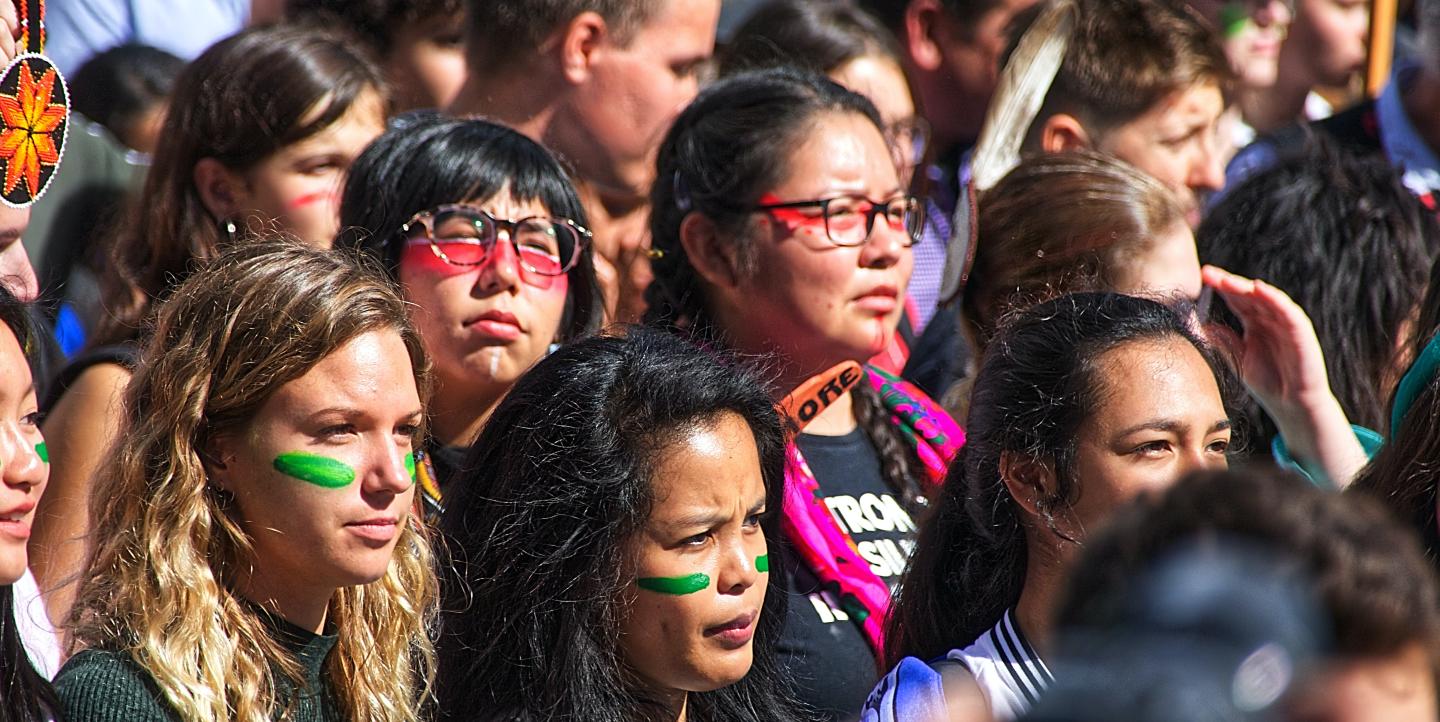The United Nations states it bluntly: “Gender inequality coupled with the climate crisis is one of the greatest challenges of our time. It poses threats to ways of life, livelihoods, health, safety and security for women and girls around the world.”
From the New York Times: “Although climate change is a collective problem, its burdens — displacement, homelessness, poverty, sexual violence, disease — weigh more heavily on women and girls [. . .] 80 percent of people displaced by climate change are women.”
The BBC notes, “Extreme weather disasters intensify existing inequalities in society. Women don't have good enough representation at climate talks to have their say on effective solutions.”
What should journalists take away from this?
- Climate change isn’t gender-neutral and should not be reported that way.
- The impact of climate change amplifies gender inequalities, an important part of the story.
- Gender-disaggregated data – data collected and tabulated separately for women and men – is vital for fair reporting on climate issues.
By segmenting data by gender, region or marginalized groups, journalists can uncover hidden inequalities and issues.
“It is critical in understanding what is truly happening. We have seen this time and again, where men are the ones who are reflected in the data but when you disaggregate it, you get a very different picture,” said Fara Warner, climate editor for Solution Journalism Network (SJN).
Here are some resources for journalists that help fill the data gap. These resources allow users to filter data by gender to facilitate more nuanced, comprehensive reporting on climate and gender:
- A report from the Organization for Economic Co-operation and Development (OECD) provides evidence and analysis on gendered impacts of climate change. Data shows that more women die prematurely than men due to environmental degradation. Women also face greater economic insecurity and are more often displaced by climate-forced migration.
- Open-access data tools from Data2X provide a link to the World Bank Gender Data Portal, with more than 900 indicators in accessible and usable format on the website.
- “Gender Data Solutions Inventory”, from Data2X records over 140 gender data solutions across seven areas of development, including environment and climate.
The storytellers
Women are on the frontlines of the climate crisis. Who is telling their stories?
While covering COP26 in Glasgow, Washington Post climate reporter Kasha Patel heard young women describe how extreme weather shuttered their schools, deepening inequalities in education. Research shows girls are less likely to return to the classroom after a crisis.
“We often talk about the effects of climate change on our atmosphere, but this discussion showed it can also indirectly affect social issues and become a `threat multiplier,’” said Patel. She reported that extreme weather was “taking girls out of school, forcing them into earlier marriages and increasing their exposure to violence.”
Patel used data to document how girls in low-income countries are disproportionately impacted by climate change. “These types of stories show the lasting effect that climate change will have on generations, setting back social progress in many regions of the world,” she wrote.
On another front, a story by the Fuller Project and the Washington Post, reported a link between violence against women and weather disasters.
A study based on satellite and national health survey data showed domestic violence rose by 60% in areas of Kenya that experienced severe weather. That analysis, alongside 40 others by The Lancet, found similar results.
When it comes to women battling climate, there is no shortage of topics. Covering Climate Now (CCN) suggests sources for story ideas as well as a climate solutions guide.
Among CCN’s best practices for climate journalists:
- Know your audience
- Humanize and localize the story
- Know the science, but talk like a real person
- Tell the whole story, including solutions
- Do not give a platform to climate deniers
- Remember, climate is a story for every beat
SJN’s Warner believes journalists “will be held accountable for how we cover this climate crisis. We can do better,” she told me in an interview. Her words have a ring of truth as global warming tightens its grip.
U.N. statistician Iliana Vaca Trigo shared additional resources journalists can consult to enhance their coverage of women and climate change:
- Gender and environment statistics: Unlocking information for action and measuring the SDGs, from U.N. Environment, and IUCN.
- Mainstreaming gender in environment statistics for the SDGs and beyond: Identifying priorities in Asia and the Pacific, from U.N. Women, U.N. ESCAP, U.N. Environment, and IUCN.
- Progress on the Sustainable Development Goals: The Gender Snapshot 2022, from the U.N. and U.N. Women. https://unstats.un.org/sdgs/gender-snapshot/2022/GenderSnapshot.pdf
- Gendered impacts of climate change: Evidence from Asia, from U.N. Women.
- Gender equality and sustainable energy: Lessons from Pacific Island countries and territories, from U.N. Women.
- Gender Climate Tracker, from the Women’s Environment and Development Organization
This article was adapted from a story originally posted on DataJournalism.com. It was edited and republished on IJNet with permission.
Photo by Pascal Bernardon on Unsplash.


